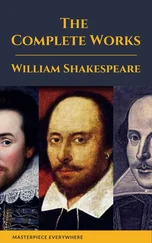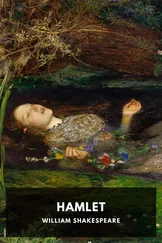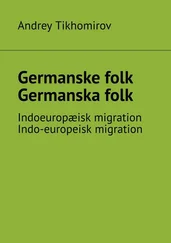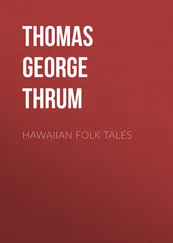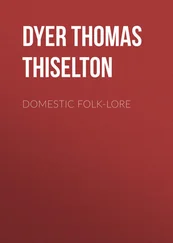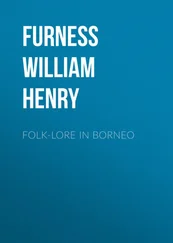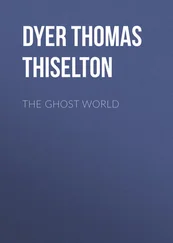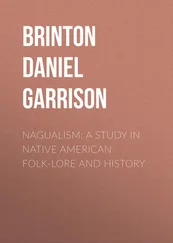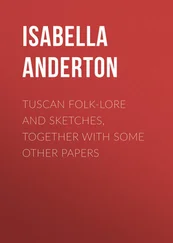Thomas Dyer - Folk-lore of Shakespeare
Здесь есть возможность читать онлайн «Thomas Dyer - Folk-lore of Shakespeare» — ознакомительный отрывок электронной книги совершенно бесплатно, а после прочтения отрывка купить полную версию. В некоторых случаях можно слушать аудио, скачать через торрент в формате fb2 и присутствует краткое содержание. Жанр: foreign_antique, foreign_prose, на английском языке. Описание произведения, (предисловие) а так же отзывы посетителей доступны на портале библиотеки ЛибКат.
- Название:Folk-lore of Shakespeare
- Автор:
- Жанр:
- Год:неизвестен
- ISBN:нет данных
- Рейтинг книги:4 / 5. Голосов: 1
-
Избранное:Добавить в избранное
- Отзывы:
-
Ваша оценка:
- 80
- 1
- 2
- 3
- 4
- 5
Folk-lore of Shakespeare: краткое содержание, описание и аннотация
Предлагаем к чтению аннотацию, описание, краткое содержание или предисловие (зависит от того, что написал сам автор книги «Folk-lore of Shakespeare»). Если вы не нашли необходимую информацию о книге — напишите в комментариях, мы постараемся отыскать её.
Folk-lore of Shakespeare — читать онлайн ознакомительный отрывок
Ниже представлен текст книги, разбитый по страницам. Система сохранения места последней прочитанной страницы, позволяет с удобством читать онлайн бесплатно книгу «Folk-lore of Shakespeare», без необходимости каждый раз заново искать на чём Вы остановились. Поставьте закладку, и сможете в любой момент перейти на страницу, на которой закончили чтение.
Интервал:
Закладка:
96
Quoted in Southey’s “Commonplace Book,” 1849, 2d series, p. 462.
97
See Tylor’s “Primitive Culture,” 1871, vol. i. pp. 261, 296, 297, 321.
98
In “3 Henry VI.” (ii. 1), Edward says:
“henceforward will I bear
Upon my target three fair shining suns.”
99
“Glossary to Shakespeare,” p. 283.
100
Ray gives the Latin equivalent “Ab equis ad asinos.”
101
Baring-Gould’s “Curious Myths of the Middle Ages,” 1877, p. 190.
102
Cf. “Love’s Labour’s Lost” (v. 2): “Yet still she is the moon, and I the man.”
103
Fiske, “Myths and Mythmakers,” 1873, p. 27.
104
“Curious Myths of the Middle Ages,” 1877, p. 197.
105
Douce’s “Illustrations of Shakespeare,” 1839, p. 10.
106
For further information on this subject, see Tylor’s “Primitive Culture,” 1873, vol. i. pp. 288, 354-356; vol. ii. pp. 70, 202, 203.
107
See Brand’s “Pop. Antiq.,” vol. iii. pp. 142, 143.
108
See “English Folk-lore,” pp. 43, 44.
109
“Primitive Culture,” 1873, vol. i. pp. 354, 355.
110
The words “moonish” (“As You Like It,” iii. 2) and “moonlike” (“Love’s Labour’s Lost,” iv. 3) are used in the sense of inconstant.
111
See Douce’s “Illustrations of Shakespeare,” 1839, p. 18.
112
Tylor’s “Primitive Culture,” vol. i. p. 329.
113
“Illustrations of Shakespeare,” 1839, p. 16.
114
See Scot’s “Discovery of Witchcraft,” 1584, pp. 174, 226, 227, 250.
115
For further examples, see Douce’s “Illustrations of Shakespeare,” p. 17.
116
See Douce’s “Illustrations of Shakespeare,” 1839, p. 116.
117
See Swainson’s “Weather-Lore,” 1873, pp. 182-192.
118
See Tylor’s “Primitive Culture,” 1873, vol. i. p. 130; “English Folk-Lore,” 1878, pp. 41, 42.
119
See Swainson’s “Weather-Lore,” pp. 182, 183.
120
See Williams’s “Superstitions of Witchcraft,” pp. 123-125; Scot’s “Discovery of Witchcraft,” bk. iv. p. 145.
121
“Illustrations of Shakespeare,” 1839, p. 405.
122
Nares’s “Glossary,” 1872, vol. ii. p. 580.
123
“Primitive Culture,” vol. i. p. 131.
124
Cf. “Richard III.” (iv. 4); “1 Henry IV.” (i. 1, iii. 1); “Antony and Cleopatra” (iii. 13); “The Tempest” (i. 2); “Hamlet” (i. 4); “Cymbeline” (v. 4); “Winter’s Tale” (iii. 2); “Richard II.” (iv. 1).
125
“Primitive Culture,” vol. i. p. 131; see Brand’s “Popular Antiquities,” 1849, vol. iii. pp. 341-348.
126
“Walton’s Lives,” 1796, p. 113, note.
127
Douce’s “Illustrations of Shakespeare,” 1839, p. 397.
128
Ibid. p. 3.
129
See Brand’s “Pop. Antiq.,” 1849, vol. iii. p. 400.
130
Purchas, “His Pilgrimes” (1625, pt. i. lib. iii. p. 133), quoted by Mr. Aldis Wright in his “Notes to The Tempest,” 1875, p. 86.
131
See Puck as Will-o’-the-Wisp; chapter on “Fairy-Lore.”
132
See “Notes and Queries,” 5th series, vol. x. p. 499; Brand’s “Pop. Antiq.,” 1849, vol. iii. p. 410; Nares’s “Glossary,” vol. i. p. 309.
133
A “fire-drake” appears to have been also an artificial firework, perhaps what is now called a serpent. Thus, in Middleton’s “Your Five Gallants” (1607):
“But, like fire-drakes, Mounted a little, gave a crack and fell.”
134
“New Illustrations of the Life, Studies, and Writings of Shakespeare,” vol. ii. p. 272.
135
See Thoms’s “Notelets on Shakespeare,” p. 59.
136
“Fairy Mythology,” edited by Hazlitt, 1875, p. 40.
137
Among the many other names given to this appearance may be mentioned the following: “Will-a-wisp,” “Joan-in-the-wad,” “Jacket-a-wad,” “Peg-a-lantern,” “Elf-fire,” etc. A correspondent of “Notes and Queries” (5th series, vol. x. p. 499) says: “The wandering meteor of the moss or fell appears to have been personified as Jack, Gill, Joan, Will, or Robin, indifferently, according as the supposed spirit of the lamp seemed to the particular rustic mind to be a male or female apparition.” In Worcestershire it is called “Hob-and-his-lanthorn,” and “Hobany’s” or “Hobnedy’s Lanthorn.”
138
Mr. Ritson says that Milton “is frequently content to pilfer a happy expression from Shakespeare – on this occasion, ‘night-wanderer.’” He elsewhere calls it “the friar’s lantern.”
139
Thorpe, “Northern Mythology,” 1852, vol. iii. pp. 85, 158, 220.
140
“Notelets on Shakespeare,” pp. 64, 65.
141
Ibid.
142
See Proctor’s “Myths of Astronomy;” Chambers’s “Domestic Annals of Scotland,” 1858, vol. ii. pp. 410-412; Douce’s “Illustrations of Shakespeare,” pp. 364, 365.
143
See Patterson’s “Insects Mentioned by Shakespeare,” 1841, p. 145.
144
“Letters,” vol. i. p. 310; vol. vi. pp. 1, 187. – Ed. Cunningham.
145
Douce’s “Illustrations of Shakespeare,” 1839, p. 369.
146
See Tylor’s “Primitive Culture,” vol. i. pp. 364-367.
147
See Swainson’s “Weather-Lore.”
148
Batman upon Bartholomæus – “De Proprietatibus Rerum,” lib. xi. c. 3.
149
Polwhele’s “Cornish Vocabulary.”
150
Cf. “Macbeth,” iii. 4, “O, these flaws and starts.”
151
See Harland and Wilkinson’s “Lancashire Folk-Lore,” 1867, pp. 116-121; “Notes and Queries,” 1st series, vol. viii. p. 224; “Penny Cyclopædia,” vol. vii. p. 206, article “Cirripeda.”
152
Nares’s “Glossary,” 1872, vol. i. p. 56.
153
See Harting’s “Ornithology of Shakespeare,” 1871, pp. 246-257.
154
“Ornithology of Shakespeare,” 1871, p. 252.
155
See “Philosophical Transactions” for 1835; Darwin’s “Monograph of the Cirrhipedia,” published by the Ray Society; a paper by Sir J. Emerson Tennent in “Notes and Queries,” 1st series, vol. viii. p. 223; Brand’s “Popular Antiquities,” 1849, vol. iii. pp. 361, 362; Douce’s “Illustrations of Shakespeare,” 1839, p. 14.
Читать дальшеИнтервал:
Закладка:
Похожие книги на «Folk-lore of Shakespeare»
Представляем Вашему вниманию похожие книги на «Folk-lore of Shakespeare» списком для выбора. Мы отобрали схожую по названию и смыслу литературу в надежде предоставить читателям больше вариантов отыскать новые, интересные, ещё непрочитанные произведения.
Обсуждение, отзывы о книге «Folk-lore of Shakespeare» и просто собственные мнения читателей. Оставьте ваши комментарии, напишите, что Вы думаете о произведении, его смысле или главных героях. Укажите что конкретно понравилось, а что нет, и почему Вы так считаете.



